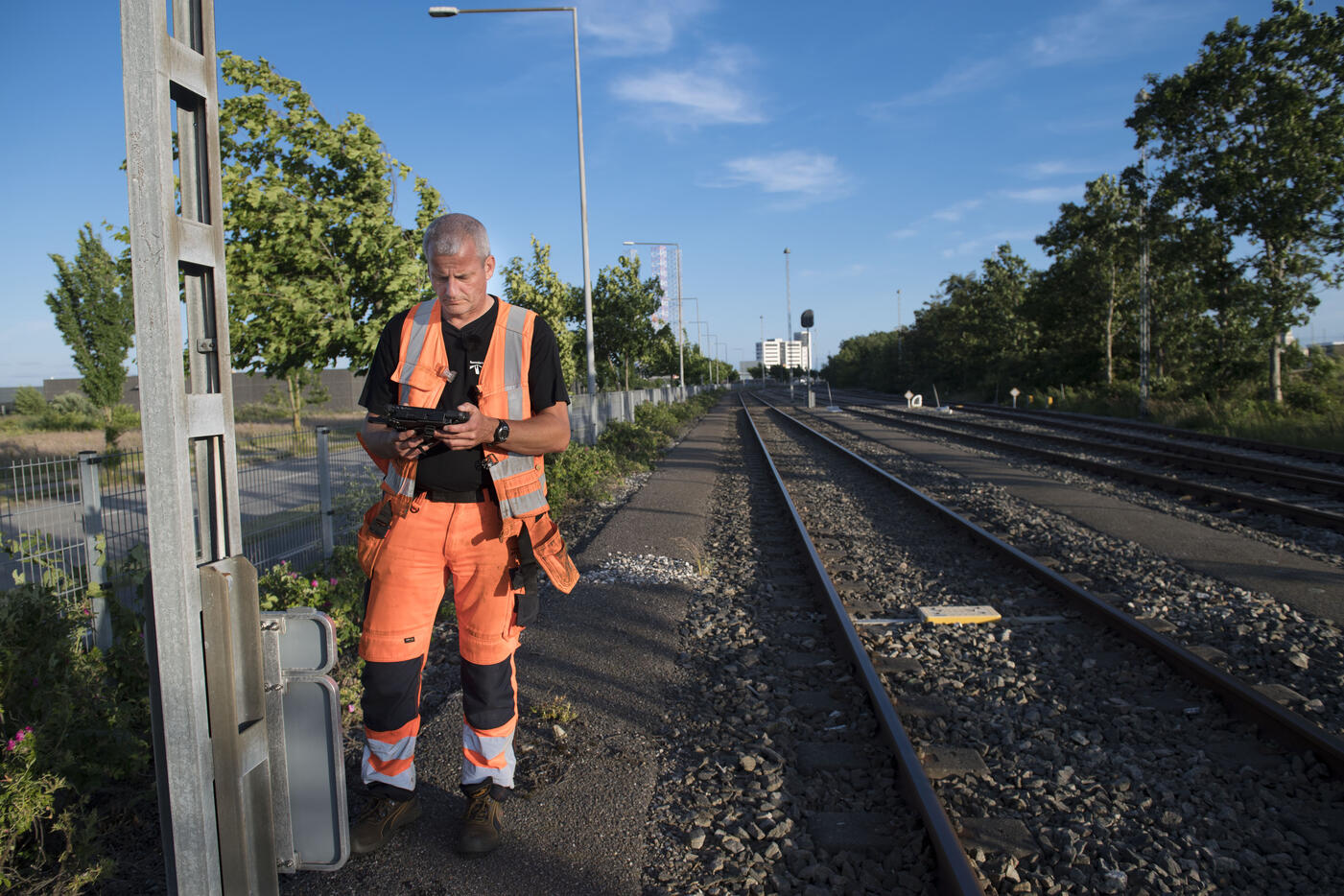Proactive process control in Danish railway operations
Proactive process control in railway production is made possible by the new Task management functionality specified by TMS team of Emch+Berger. Our Danish client, Banedanmark, will break new ground by being the first rail infrastructure operator to introduce this advanced functionality into its production. The Task management functionality has seen the light of day on Danish tracks in the beginning of August 2021.
Effective, dynamic control of production
Looking back, one of the biggest obstacles in achieving customer satisfaction in the traditionally operated railway is the lack of control in production. This stems from the fact that the production was organised around a single element – the timetable. Since the timetable provides operating personnel only with estimated departure and arrival times for trains, they rely on rule-of-thumb and their own experience when breaking down timetable information into operating practice. Therefore, it is no surprise that introducing effective process control into the railway production process environment has, so far, remained only a philosophical discussion.
One of the main principles in designing the new Traffic Management System (TMS) for our Danish client Banedanmark is, that customer satisfaction can be achieved through successful implementation of services and thereby meeting customers’ expectations, even if disruptions affect operations and resources need to be dynamically reassigned. Therefore a traffic management system that dynamically manages production tasks has been specified.
Contrary to the common belief that the complexity of the railway production does not allow for adequate levels of process control, the Task management functionality allows our client to create a plan consisting of specific tasks and resource requirements needed to provide the service (instead of simply departure and arrival times). It provides precise times for the implementation of any task and an additional time tolerance window to allow for inevitable variation. The TMS monitors the execution of tasks in real time and readjusts the tasks in case of any disruption.
By implementing the Task management functionality, Banedanmark introduces a high level of effective process control into its railway operation. At the same time, Task management provides relief to operations’ staff and improves punctuality of the railway by focusing on precision in production.
Introduction
Following successful operational trials, Banedanmark decided that the new Hand-held Terminals (HHT) are now ready for commercial operations, thereby providing the first practical platform for the advanced Task management functionality. While the use of HHTs as a tool to exchange information about shunting requests and possessions and the like has for a long time been widespread in railway operation, the use of Task Management functionality on them represents a first in the railway industry. In specifying this functionality, we ensured our client becomes the first rail infrastructure operator in the world that operationalises dynamic process control in railways.
During the trials, the operational readiness of the Task management functionality was tested. It was necessary to determine if the functionality was mature enough to support users in the process of establishing, ending, and handing over possessions, as well as allowing and rejecting vehicles from entering a possession using the new HHT device. To the joint satisfaction of our client, and the design and development teams, the new HHT equipped with the Task management functionality successfully supported users to execute their duties. This enabled the fulfilment of another important milestone on Banedanmark’s journey towards digitalisation.
In addition to supporting processes related to possessions, the Task management functionality has also effectively supported the process of establishing and ending temporary shunting areas during the trial run.
Even though this new functionality represents only a single component of the system we specified for our Danish client, we forecast several benefits in the future. Some of these are an opportunity to utilise resources more efficiently, increase infrastructure capacity and increase control of railway operations by making the processes predictable, system driven and supervised. This advanced functionality was introduced into everyday operations on Danish tracks with the commissioning of the new signalling on the route Roskilde–Køge–Næstved in August 2021.
At this first stage, the Task Management functionality is only supporting processes related to possessions and temporary shunting areas, but Banedanmark is, nevertheless, forecasting that this unique functionality will significantly contribute to yielding business benefits such as increased traffic, improved operational efficiency and increased functionality. Encouraged by the results from the tests carried out on the Task management functionality for handling possessions and temporary shunting areas, Banedanmark is eager to test this advanced functionality in the context of managing other restrictions, such as temporary speed restrictions.
Task Management is a keystone to controlling processes in railway operations and Banedanmark intends to roll out this feature over all railway operations on its network, including specifically the movements of trains and the management of bascule bridges and catenary power.
